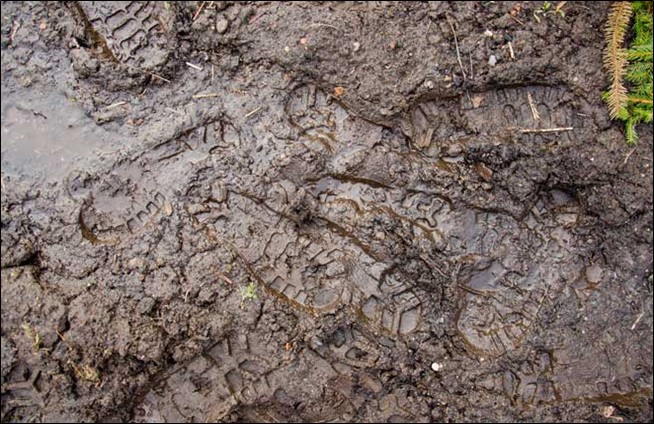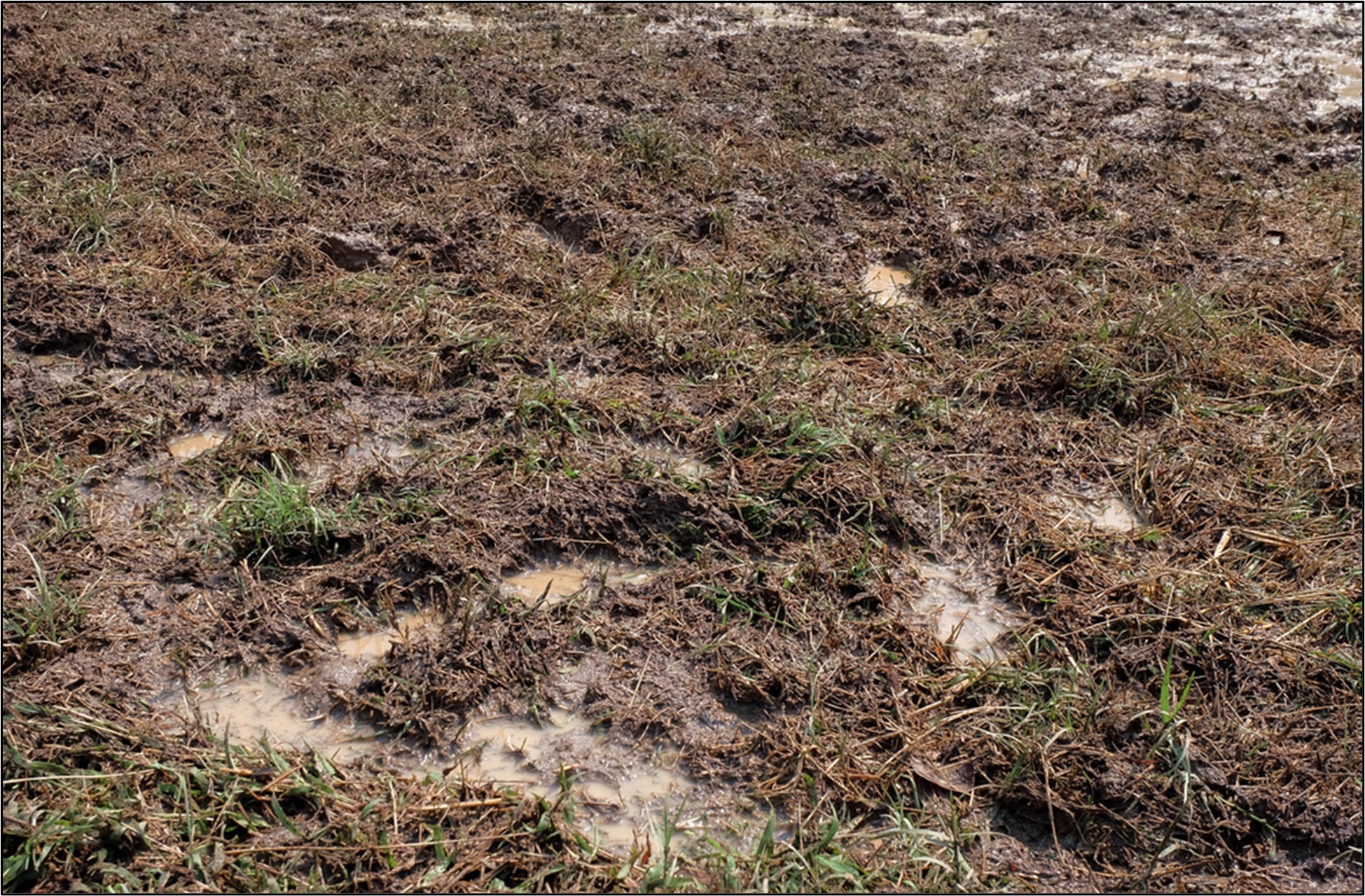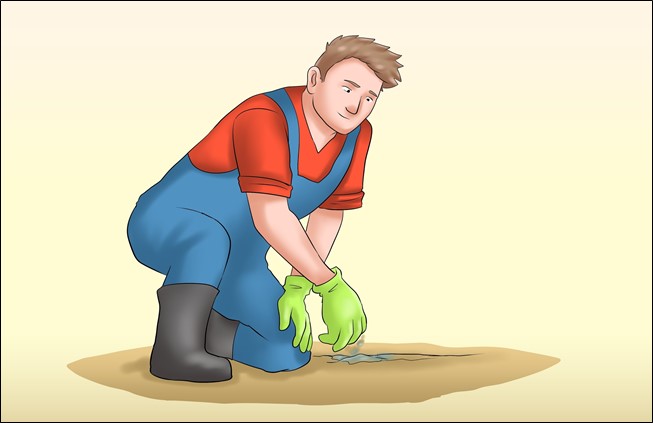You may search for ‘how to dry up a wet yard fast?’ as creating a beautiful yard is a labor of love and joy for many.
It’s a place for relaxation and enjoyment, where friends and family gather to create lasting memories.
However, the allure and functionality of your yard can quickly diminish when it becomes wet and muddy.
Understanding why a yard turns muddy is not just about water usage.
Factors like excessive rainfall, inadequate drainage, and soil quality significantly impact the condition of your yard.
This article delves into practical strategies for quickly drying up a wet yard, ensuring your outdoor space remains inviting and usable, no matter the weather.
Understanding Muddy Yards and Their Effects
A muddy yard is more than just an eyesore; it’s a practical inconvenience that affects your daily life.
This condition arises when water accumulates excessively, preventing the soil from absorbing moisture properly.
The impacts of a muddy yard are far-reaching. Take a look.
- Environmental Concerns: A muddy yard creates an unclean environment and uninviting outdoor spaces.
- Plant Health: Excess moisture can harm plant life, affecting your yard’s overall health and aesthetics.
- Indoor Cleanliness: Mud can easily be tracked into your home, leading to cleanliness issues.
- Reduced Usability: A wet yard limits outdoor activities, restricting the enjoyment of your outdoor space.
Identifying the Causes of Muddy Yards
Understanding why a dry yard turns muddy is essential in finding fast and effective solutions.
Several factors contribute to this transformation. Take a look at the following.
- Weather Conditions: Heavy and frequent rainfall is a primary cause, especially in regions with high precipitation.
- Drainage Issues: Poorly designed or blocked drainage systems can lead to water logging, exacerbating the mud problem.
- Soil Absorption Capacity: Different soil types have varying water absorption capacities. Clay-heavy soils, for example, tend to retain more water, leading to muddiness.
- Landscape Grading: Improper yard grading can prevent water from flowing away efficiently, causing accumulation in certain areas.
Effective Ways to Dry Up A Muddy Yard

As the disadvantages outweigh the advantages of having a wet and muddy yard, it becomes very important to get rid of them.
Although you cannot get rid of them so easily, there are effective ways and tools that can guide you exactly on how to dry up a wet yard.
So, without any further delays let us straight get to solutions on dealing up with drying up a wet yard.
1. Using Agricultural Lime
Agricultural limes are designed in a way that tends to absorb more water.
Hence, it is extensively used for drying up a wet yard. It is extremely natural and safe.
When you do not tend to have enough time or equipment you can count on the agricultural limes.
You just need to spread the limes over the possible areas of the yards and let it process.
As you spread the limes it frees the water from the soil and begins chemically reacting with the moisture causing the soil to dry.
So, this is one effective method you can count on.
2. Using Kitty Litter
Kitty Litter is a great way of controlling and drying a wet yard. It is specially designed for the same purpose.
While using kitty litter take note of the yard and ensure to use the quantity as per the area of the yard.
Spread the kitty litter over the yard and leave it for a day or two and then remove it out.
Later you can either plant new trees or spread sod around.
3. Using Straws
Using Straws is one of the easiest and affordable ways of dealing with wet and muddy yards.
Straws are easily accessible in any local market and can be bought by just spending a few dollars.
Once you get the straws from the market, lay them in your yard.
It will soak the water from the ground and contribute to making it dry.
Do ensure that no spaces are left in between while spreading the straws.
4. Build a French Drain
Getting a French Drain installed is a great way to direct the water flow to the specific area you wish.
This is the most effective measure to help dry up a wet area.
The French drain is usually filled with gravel or rocks, which controls the force flow of the water.
So, setting up a French drain will allow you to control and direct the water flow and, hence, will prevent an area from getting wet.
5. Adding Compost
Using compost is another way of drying your wet yard effectively. Look for the wet area and add compost to it.
The compost will soak all the water from the ground and dry it.
It is the most effective, affordable, and used technique to transform your wetland into a dry one.
Most professionals often advise using compost as they are natural and organic.
Sometimes, using a product that has a chemical composition can ruin the entire yard.
So, it is better to trust something natural and trustworthy.
6. Covering Your Wet Yard with Water-Absorbent Plants
Another effective way to dry up a wet yard is by covering it with water-absorbent plants.
Certain plants need too much water to maintain their growth. So, using these plants to cover your wet-area yard can help the water dry early.
You can use sod as the best way to deal with such situations.
Other than that, Ferns, Lily of the Valleys, Iris, Elephant Ear, and many more are a few other plants that absorb water in huge amounts.
7. Dethatching Your Yard
Dethatching your yard is another great way to dry up a wet yard.
Thatches are small pieces of grass that get thatched and must be removed repeatedly.
This will help you dry up a wet yard.
8. Digging and Filling Out the Wet Area with Topsoil and Sand
Moving further, one of the easiest ways to get rid of wet and muddy areas is digging the area that has turned muddy and wet.
Once you dig it and reach a solid space, you can stop and fill it with a mixture of topsoil and sand.
This will help you get rid of the wet area.
After digging that wet area, you can also plant new trees in the space.
This will allow the soil to absorb more water and reduce the water accumulation in that area.
9. Pressing Using the Tamper Tool
Using a tamper flatly designed from below allows you to push the soil down and bring it to the level.
Press stiffly on the uneven parts of the soil and get it even.
This pressing of soil and bringing it to even can also help you dry up a wet yard.
We have tried our best to hunt and present the easiest and most affordable measures to help you deal with wet and muddy yards effectively.
We hope these above methods help.
Benefits of a Dry Yard

Since we are confident about how to dry up a wet yard, it is equally important to understand the importance of dry land for an effective yard. Why are drylands the most preferred while having a yard of your own?
To discover some interesting benefits of having a dry yard, let us dive into detail.
- A safe place for your kids and family to spend time.
- Might increase your property value.
- Effective growth of plants.
- Extends your living space, eradicating dirt and an unhygienic environment.
- Will not have to spend too much on maintaining the yard.
Points to Remember
Now, you are ready to put the above-given steps to practice turning the wet area into a dry one.
But there are certain aspects that you need to remember while carrying out your activities.
It is always better to be prepared than to obnoxiously respond to a sudden situation.
Below are a few points you must remember while carrying out your step on turning a wet area into a dry one.
- If you have no time or idea on how to dry up a wet area, please do not practice any random stuff. That will only make your soil suffer more. Check for our steps that give you an easy guide. But even if that does not work, you prefer taking professional help. That will keep you away from a lot of chaos.
- Before following any of the above steps in your yard, please ensure that you have a check on the related tools that are needed. Do not leave work halfway.
- Be very particular with the agricultural lime you use. There are a variety of limes available in the market. Consider taking hydrated or quick limes. Also, note the concentration of the lime; it can sometimes lead to skin burning.
- Be very conscious while using kitty litter. Make sure to wear a mask, as kitty litter emits a lot of dust that can be very infectious to your lungs.
Conclusion
In conclusion, transforming a wet and muddy yard into a dry, welcoming space is achievable with the right approaches.
By understanding the causes and applying the effective methods discussed, you can quickly overcome the challenges of a soggy yard.
Remember, a dry yard not only enhances the beauty of your property but also provides a safe and enjoyable space for family, friends, and pets.
We hope this guide on how to dry up a wet yard fast has equipped you with the knowledge and tools to maintain a healthy and vibrant outdoor area.
Here’s to many enjoyable moments in your beautifully restored yard!
Which tip was the most helpful? Let us know in the comments.

